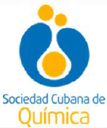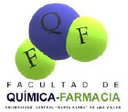Executive Secretary

7th International Chemistry Symposium
SIQ 2019
The incidence of Cervical Cancer (CC) worldwide is 530,000 cases per year, of which 85% occur in developing countries. Genotypes 16 and 18 are identified as the most prevalent and responsible for 70% of cases of CC worldwide. The vaccines currently available against HPV are highly expensive, which limits their use in developing countries like our country. L1 is the major capsid protein of the HPV, it can be expressed recombinantly in strains of Escherichia coli. In our laboratory, the HPV 16 and 18 genes were amplified from a sample of total DNA from a Camagüey patient. The L1 HPV 16 and 18 proteins were expressed in the E. coli Shuffle®T7 strain. The inclusión bodies were solubilized with 8M urea and the proteins were purified by metal chelate chromatography. The strategy described could be used to obtain L1 proteins for the future development of a Cuban vaccine candidate against CC. This process would contribute to the development of preventive vaccines with a more economical production process and affordable price to the population
The incidence of Cervical Cancer (CC) worldwide is 530,000 cases per year, of which 85% occur in developing countries. Genotypes 16 and 18 are identified as the most prevalent and responsible for 70% of cases of CC worldwide. The vaccines currently available against HPV are highly expensive, which limits their use in developing countries like our country. L1 is the major capsid protein of the HPV, it can be expressed recombinantly in strains of Escherichia coli. In our laboratory, the HPV 16 and 18 genes were amplified from a sample of total DNA from a Camagüey patient. The L1 HPV 16 and 18 proteins were expressed in the E. coli Shuffle®T7 strain. The inclusión bodies were solubilized with 8M urea and the proteins were purified by metal chelate chromatography. The strategy described could be used to obtain L1 proteins for the future development of a Cuban vaccine candidate against CC. This process would contribute to the development of preventive vaccines with a more economical production process and affordable price to the population
About The Speaker

MsC. Susana Brito Molina






